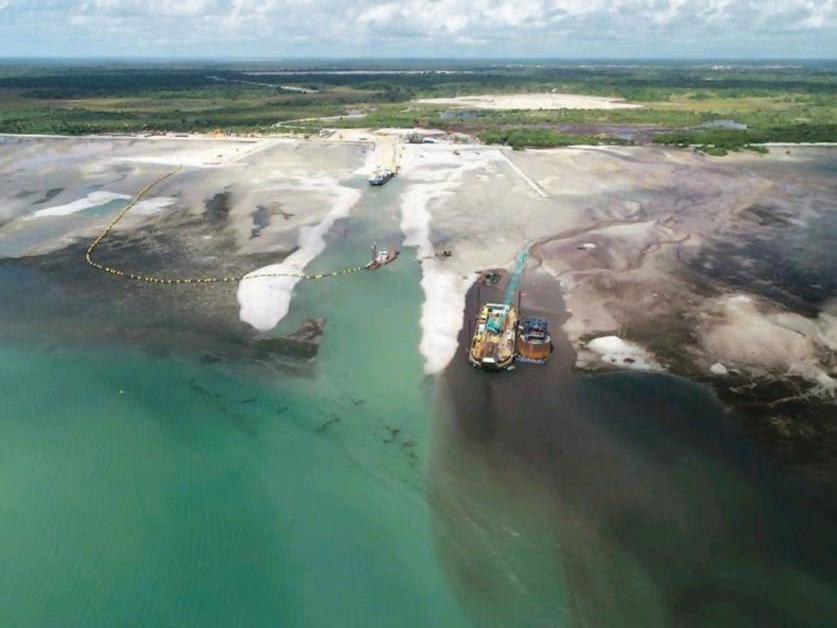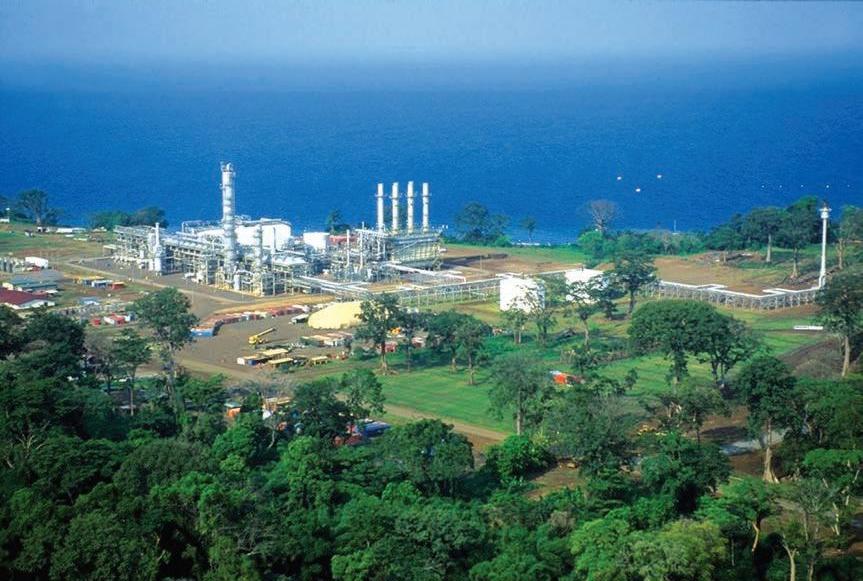
5 minute read
LNG and FLNG update
MOVING LNG AND FLNG AHEAD IN TURBULENT TIMES
There are signs of hope in the LNG and FLNG sectors of multiple African markets. Georgia Lewis reports on industry optimism across Egypt, Equatorial Guinea, Mozambique and Nigeria.
ON A GLOBAL level, commercial and industrial gas demand is down in the wake of lockdowns imposed to try and mitigate the spread of COVID-19. Rystad Energy estimates global natural gas demand will fall by almost two per cent this year as a result of the drop in economic and industrial activity.
In absolute terms, Rystad analysts expect global gas demand to total close to 3,878 bbcm in 2020, down from 3,951 bcm last year. This is in stark contrast to Rystad’s pre-pandemic estimates; this year’s natural gas demand was expected to grow to 4,038 bcm.
However, low prices are helping protect gas demand to some extent as it remains more competitive than other sources of energy, especially in the power sector where gas use remains relatively stable in most countries.
“2020 will be the first year since 2009 where there will be no growth in consumption. This will be a hard blow for an industry accustomed to yearly growth rates of more than three per cent,” says Rystad Energy’s head of Gas and Power Markets Carlos Torres-Diaz.
As for the LNG and FLNG sectors, global liquefied natural gas (LNG) benchmark prices continue to fall due to oversupply. As such, LNG producers with short-run marginal costs
An LNG facility under construction in Mozambique.
2020 will be the first year where there will be no growth in consumption, a hard blow for an industry accustomed to yearly growth.”
(SMRCs) that exceed spot prices are looking to curtail production. However, producers can run into problems as liquefaction facilities are designed to operate at maximum capacity almost continuously with limited capacity to wind back production rates. According to Rystad, this is a technical and commercial issue – technical in that liquefaction facilities tend use gas-fired turbines which are difficult to run at different power loads; and commercial in that the marginal
cost of production on-site is low, with the bulk of cost relatively fixed, propelled by power costs to drive the turbines.
As a result, producing one unit of gas less does not result in a linear unit cost decline and could mean costs stay static.
This means LNG producers whose SRMC of production exceeds spot prices in a target market can really only fully shut down, partly shut down, or undergo uptime cycling.
The International Gas Union’s
(IGU) latest report on LNG noted that the sector experienced six consecutive years of growth in which the LNG trade increased by 13 per cent to a total of 354.7 MT before the pandemic. In particular, the report noted that the floating storage and regasification unit (FSRU) sector was experiencing significant growth. Of the 37 existing LNG import markets as of February 2020, 19 imported LNG with FSRUs, and six of those had onshore terminals as well, the report found.
While the USA, Russia and Australia led the way in export growth and Qatar remains the leading exporter, North Africa showed promise with growth in Algeria and Egypt. In particular. Egypt was able to swing from being an LNG importer to an LNG exporter. Conversely, Equatorial Guinea was one of only three markets that saw a drop in export levels versus 2018.
Despite this drop, Equatorial Guinea remains one of the most ambitious countries in Africa, if not the world, when it comes to developing LNG capacity. The West African country has been a big exponent of the LNG2Africa initiative, along with declaring 2020 its Year of Investment, with a strong focus on its gas megahub project. The project involves major companies such as Vitol, Marathon Oil and Noble Energy, and it aims to pool stranded gas across the Gulf of Guinea by leveraging existing infrastructure at the Punta Europa plant. The plant has strategic facilities, such as EG LNG and Marathon’s methanol plant. These sites have relied on feedstock from the Alba field but as the output here is on the wane, gas is being extracted from additional fields in the area. The LNG2Africa initiative’s mission is “to build relationships and infrastructure that facilitates an intra-African LNG industry [to] provide power and industrial development”, working with the public and private sectors. There

Equatorial Guinea’s LNG sector is pushing on through troubled times with low prices and the COVID-19 pandemic.
is a strong focus on small scale projects to help bring power to areas with limited infrastructure.
In Egypt, meanwhile, as reflected in the IGU report, the LNG sector continues to grow. In positive news for getting through this difficult global period, Svitzer secured a five-year extension of its current contract with Egyptian LNG to assist the Idku LNG plant with four tugs, two mooring boats and one pilot boat. In an additional show of confidence in the Egyptian market, last year Svitzer inked a 10-year contract with Suez Canal Authority.
For Mozambique, 18 June will be the next big day as Anadarko and the East African country’s government have telegraphed that this will be the date of, in the words of President Filipe Nyusi, an announcement about “the most important and transformational projects in our country’s history [being] ready to advance to the next stage.” It is expected that this will be the announcement of the Final Investment Decision on the Mozambique LNG project.
Further positive news for African LNG came from Nigeria in May with the announcement of a joint venture comprising Saipem, Daewoo E&C and Chiyoda Corporation. The three companies have jointly been awarded contracts for the EPC of the Nigeria LNG Train 7 Project, which will be executed at Bonny Island LNG complex. The overall value of the contracts is more than US$4bn.
“The investment decision by Nigeria LNG Limited, which includes several important energy companies, demonstrates that natural gas, in whose value chain Saipem has a recognised
Svitzer secured a five-year contract with Egyptian LNG and a joint venture for the Nigeria LNG Train 7 project, signs of confidence in the market.”
leadership, will be pivotal to the energy transition,” said Stefano Cao, Saipem’s CEO. “The award of this contract contributes to increase the portion of nonoil-related backlog and confirms the overcoming of the link between Saipem’s share value and oil price.”
Looking ahead, low natural gas prices could be a strong incentive for African gas producers to develop the LNG and FLNG sectors to help with industrialisation, which relies on reliable access to electricity.
But monetising LNG is essential to ensuring it plays a major role in industrialisation for power generation, as well as other applications, such as feedstock for petrochemicals. This would also help move power generation away from the more heavily polluting oil- and coal-fired plants. With the right investment and a determination to push on despite tough global conditions, the big ambitions of Egypt, Equatorial Guinea, Mozambique and Nigeria have the potential to yield wide-ranging benefits and boost access to energy.










